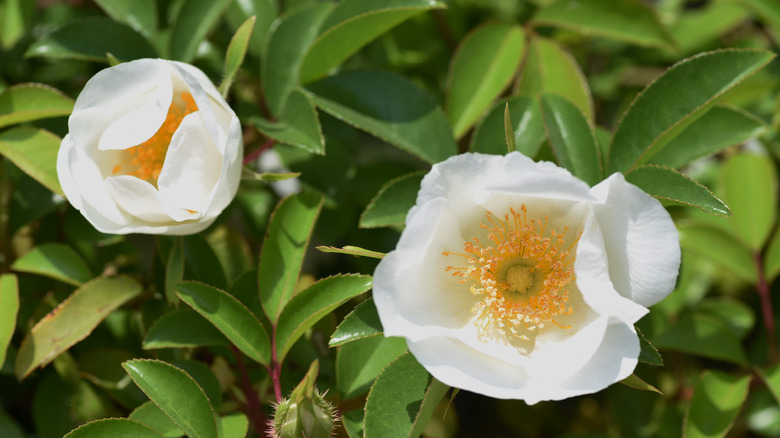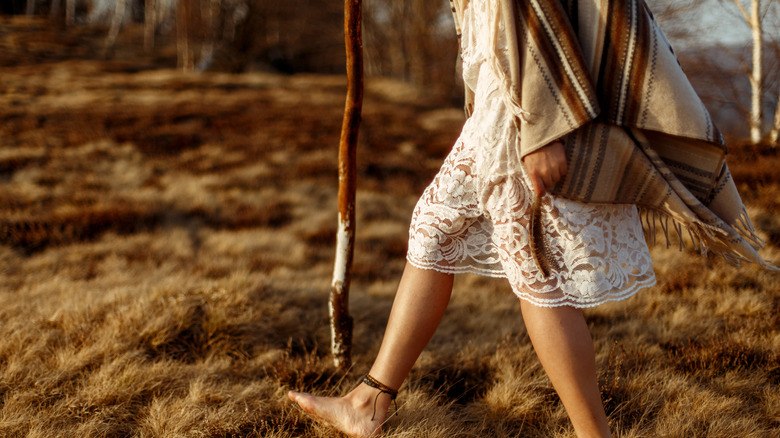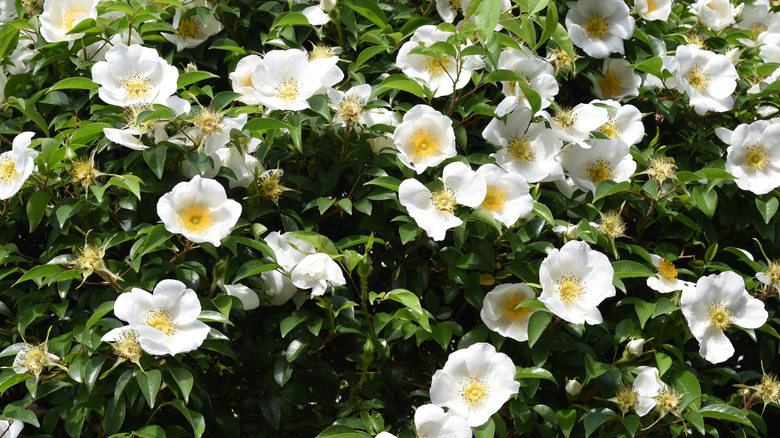A Look At The Legend Of The Cherokee Rose
The United States' foundations are largely built on bloodshed and power plays, and one of the most obvious of those came after President Andrew Jackson signed into law The Indian Removal Act in 1830. He and the U.S. legislatures decided that they wanted the land several tribes of Native Americans had cultivated east of the Mississippi River for centuries. The deal in the new law was that they would trade the Natives' land out west in exchange for the tribes' eastern lands, but only if the Natives were willing to take this offer, according to History. It was to be an option, not a forced situation.
However, the American government did not stick to their word and after a time when it was clear that some tribes weren't going for the "deal," they were forced off their land, made to walk west toward what the Jackson administration deemed "Indian Territory." Several tribes endured this exile, including the Chickasaw, Muscogee Creek, Choctaw, and Seminole tribes. One of the last tribes to be pushed west were the Cherokees.
According to the National Library of Medicine's Native Voices, an estimated 17,000 Cherokee were forced to relocate, and the Cherokee estimated that 6,000 people died. Other estimates say it was 4,000. Regardless, it was a horrid trek. The National Park Service reports that no one knows for sure how many died on the 800-mile trail of tears, but it was the worst for babies, children, and the elderly.
Cherokee elders prayed for the women to find strength
The horrors of losing their homes and communities were only made worse on the journey west as so many Cherokee were getting sick and dying. According to Northern Cherokee Nation, "The People's hearts were heavy with sadness and their tears mingled with the dust of the trail."
One personal account of a Trail of Tears survivor as quoted by the National Park Service said, "Long time we travel on way to new land. People feel bad when they leave Old Nation. Womens cry and make sad wails. Children cry and many men cry ... but they say nothing and just put heads down and keep on go towards West. Many days pass and people die very much."
In this time of crisis, the Cherokee elders did the only thing they could think to do — they prayed to the Heaven Dweller spirit, ga lv la di e hi, according to Northern Cherokee Nation. They worried that with the huge number of children dying, there would not be enough young people left to rebuild the Cherokee Nation in the west. They felt like they needed a way to keep the women strong, as that was integral to keeping the infants and children alive.
The spirit heard the elders prayer
According to Northern Cherokee Nation, the Heaven Dweller spirit answered the elders' prayers, saying, "To let you know how much I care, I will give you a sign. In the morning, tell the women to look back along the trail. Where their tears have fallen, I will cause to grow a plant that will have seven leaves for the seven clans of the Cherokee. Amidst the plant will be a delicate white rose with five petals. In the center of the blossom will be a pile of gold to remind the Cherokee of the white man's greed for the gold found on the Cherokee homeland. This plant will be sturdy and strong with stickers on all the stems. It will defy anything which tries to destroy it."
The next morning, the women saw behind them along the trail that a plant had grown and covered the trail where they had shed tears. The women saw flower blossoms slowly open and they gained strength from its beauty and the way the plant's hardiness and thorns seemed to protect the blossoms — the same way they knew they would find the "courage and determination" to protect their children and start anew in the west, per Northern Cherokee Nation.


